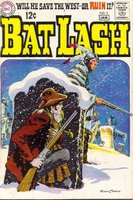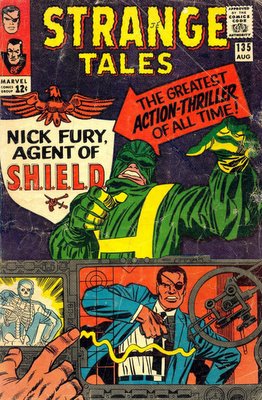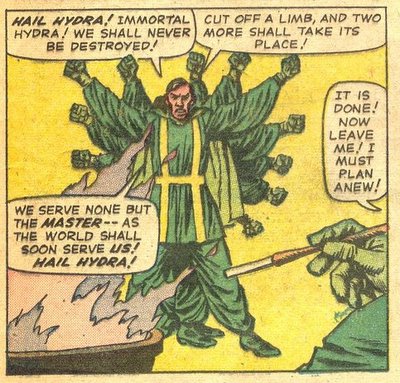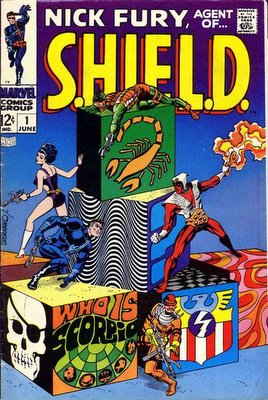
The first new superhero created by Jack Kirby in the 1960s wasn't one of the members of the Fantastic Four. It wasn't a character created for DC or Marvel. It was the Fly, an Archie Comics superhero. Unfortunately, Kirby's association with the magazine ended after the first issue, and this story is illustrated by John Giunta.
It's not hard to figure out the inspiration for the Fly. In 1958, Vincent Price starred in a movie called the Fly, where a scientist experimenting with teleportation, accidentally gets his body scrambled up with that of a fly which had entered the device with him. In this series, the Fly appears to have the various powers of flying insects, which he activates by rubbing a ring.
The opening story is pretty banal. Thomas Troy (secretly the Fly) is on a business trip to Havana, with his pretty secretary, Donna Morse. Havana? Yep, the comic has a cover date of November 1960, which is shortly after the US embargo on Cuba after the revolution. The comic was obviously written and drawn prior to that, but well after Castro took power. However, there is no mention in the book that Cuba is anything other than a fun-loving Latin American country. Of course, that implies some things we modern audiences would look askance at:

The Fly has left Donna at a swanky nightclub with its owner, a handsome American businessman named Kent, who is selling the business (good timing!), while he goes in search of some criminals who fled to the island nation. Donna wishes she was with the Fly instead. But when some criminals kidnap Kent, she follows after, at great peril to herself:

Apparently, some fun-loving Latin Americans, in the carnival atmosphere, tip over the gangsters' car, saving her. When she finally tails them to their hideout, she's shocked to discover that Kent is actually their boss. The Fly arrives in time to save her. He mentions that he actually was responsible for overturning the car earlier.
The second story features a team-up with the Shield. A yogi has been thrilling crowds with his illusions:

Yes, apparently a "phony performance" is illegal in the Fly's hometown. Tom Troy volunteers to defend him from the charges, but the yogi is not content to let justice take its course:

One deplores the laxity of the local jail, which allows criminals to retain their masks and burn giant pots of incense. The yogi gets away with the help of some demons from the spirit world, and goes on a criminal rampage. This scene with the Shield gives us an idea of how he succeeds:

But it isn't until someone wearing a gas mask is unaffected that the Fly and Shield catch on that the yogi is using a hallucinogenic gas and suggestions to convince people that they are seeing monsters and demons.

The third story is the cover tale. Obviously the Cat Girl is based on the Catwoman, who at that time hadn't been seen for some six years at DC and wouldn't appear for at least another six outside of reprints (and the Batman TV show). She first appears at the zoo, where she frees all the big cats. The Fly uses his various powers to entrap them:

Later, he encounters her with a panther and a tiger, which she sics on him. But after subduing the animals, the Fly must save her:

Curious as to who she is and how she controls the big cats, he lets her take him to a cave which serves as a lair. There he discovers her secret. The story ends like many a Batman-Catwoman tale:

Comments: Entertaining stories and competent artwork. The Fly continued through issue #30 and then the series was renamed "Fly Man", which lasted for another nine outings.












































